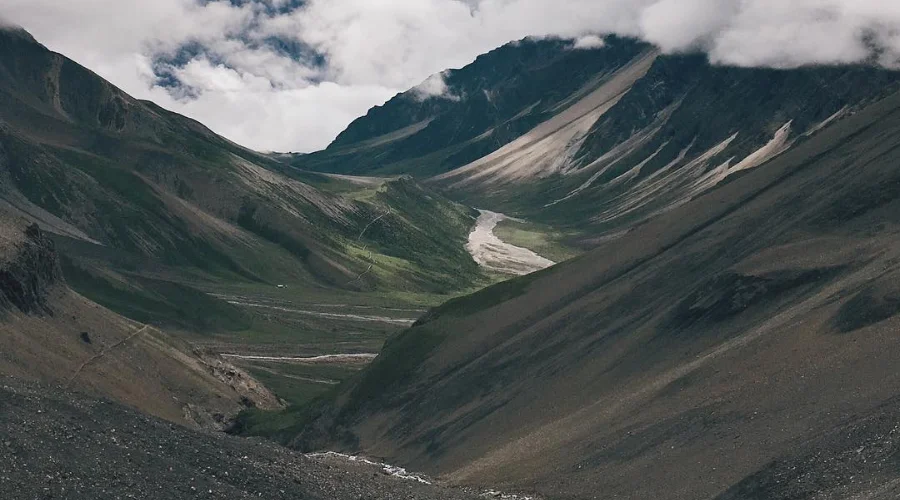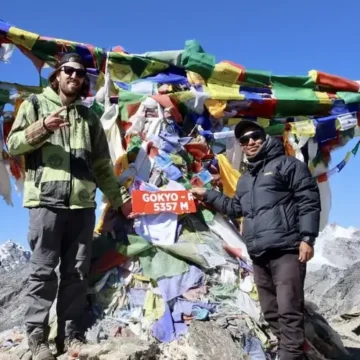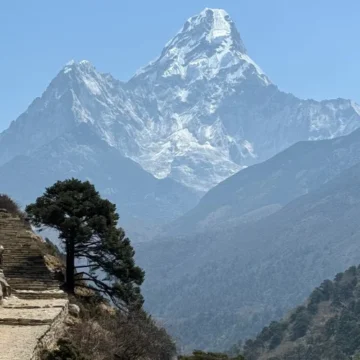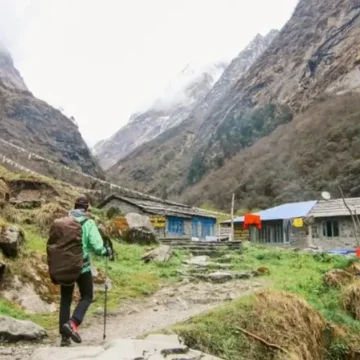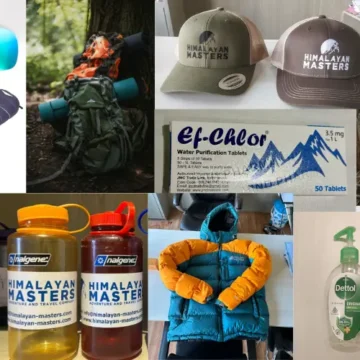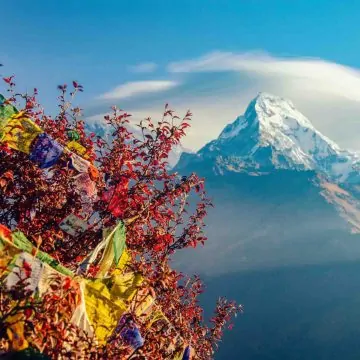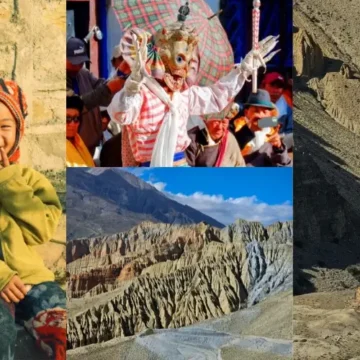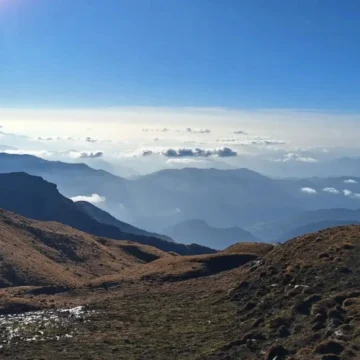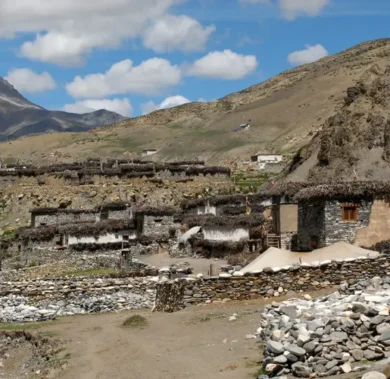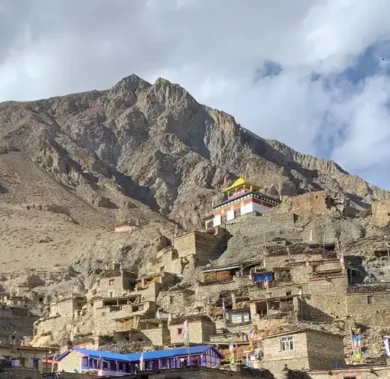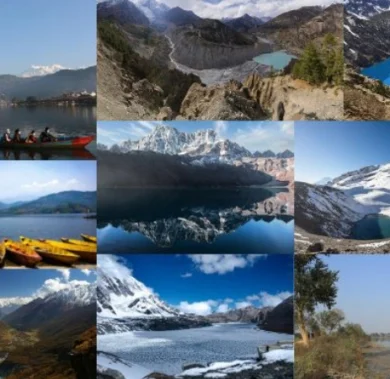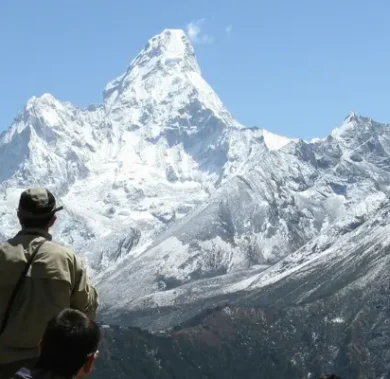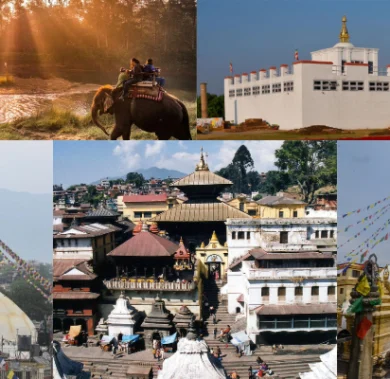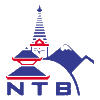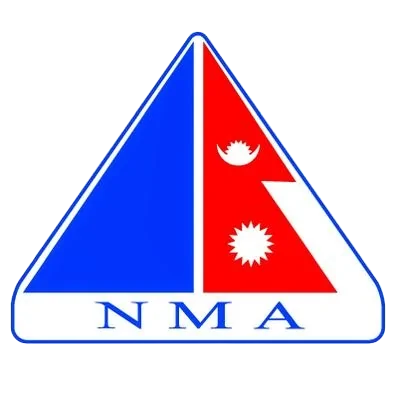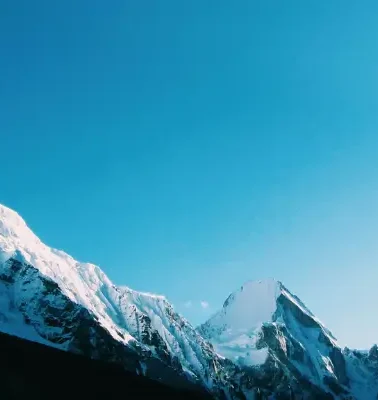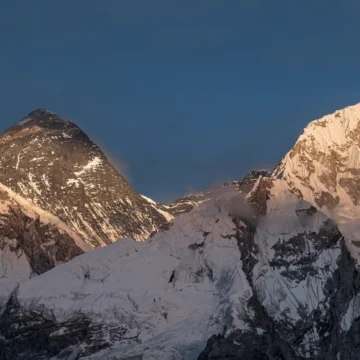
Nar Phu Valley Trek Best Season, Weather & Temperature
Table of Contents
Nar Phu Valley trek takes the trekkers up to Nar and Phu villages. This trek offers one of the most beautiful views of mountains like Dhaulagiri, Annapurna, Himlung, etc., and its surrounding regions. However, to catch the best views, you must check which season the Nar Phu Valley trek best season.
Situated between the two most iconic treks in Nepal, Annapurna Base Camp Trek and Manaslu Circuit Trek is the Nar Phu Valley Trek.
No doubt the Nar Phu Valley Trek best season is during spring (March-May) and autumn (September-November). These seasons offer one of the most stable weather and suitable trekking conditions. During these times, the skies are also very clear, providing extraordinary scenic views of picturesque villages, lush forests, rivers, basins, etc., far and wide.
In contrast, winter (December-February) and monsoon/summer seasons come with their own beauty and Nar Phu Valley trek difficulty. We do not suggest trekking in these seasons. However, if you are looking for an adventure and some of the best views of snow-capped mountains and lush rhododendron forests, then we, Himalayan Masters, are here to assist you.
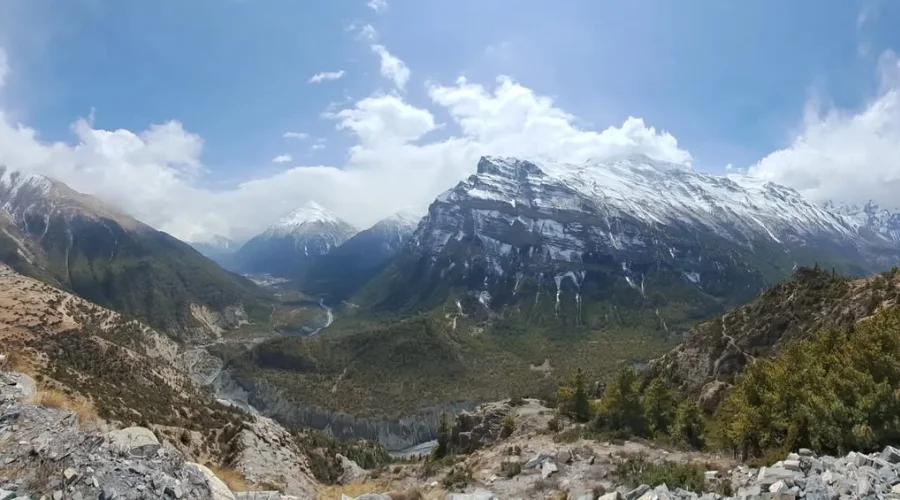
Why Choose Spring for Nar Phu Valley Trek?
Spring, popularly known as “Basanta Ritu” – meaning “The King of Season”, is among the four best seasons for the Nar Phu Valley Trek. This season is characterized by pleasing weather, neither too cold nor hot, blooming rhododendrons forests, and vibrant, rugged Nar Phu region’s terrain.
The trails during this season are dry and easier to walk. Also, clear skies with clear views of staggering snow-capped peaks make it best for photo and videography.
However, it is essential to pack for mild days and cold nights. We suggest starting trekking early to avoid the afternoon sun and winds, applying sunscreen and using sunglasses for extra protection.
How are the weather and temperature of the Nar Phu Valley trek in spring?
Daytime temperature in Nar Phu Valley can range between 10°C to 15°C, providing a comfortable environment for trekking. The skies are usually clear, which is why trekkers can spot the mountains’ view at the far end.
Moreover, nights could be a little chilly. The Nar Phu Valley temperature at night is somewhat cooler and can drop below -5°C, especially at higher altitudes. So, we suggest you carry a good-quality sleeping bag and clothes accordingly.
Occasional rainfall can be experienced in spring, so it would be wise to pack some rain cover and a light rain jacket.
Nar Phu Valley Trek in Autumn – Another Best Season
Another prime season for trekking in Nar Phu Valley is autumn. The Nar Phu Valley weather during autumn is stable, featuring clear skies, vibrant rhododendron forests, and perfect temperatures for trekking.
More importantly, autumn is the festive season. Some of the most popular festivals, like Dashain and Tihar, fall during this season. So, maybe you get to celebrate these festivals with the local inhabitants of the Nar Phu region.
However, it is the most crowded season, so we recommend you book your Nar Phu Valley accommodation and trip in advance. Also, carry warm clothes for mornings and nights.
How is the Weather and Temperature of Nar Phu Valley Trek in Autumn?
The temperature during the Nar Phu Valley trek ranges from 10°C-15°C during the daytime, especially in lower regions. While at higher altitudes, around Kang La Pass, the temperature ranges around 5°C.
Moreover, the night is still cold. Nighttime temperature can drop up to negative 10°C at night. Temperate can drop significantly around Nar and Phu Villages at night. So, packing a warm sleeping bag is important.
Can I Trek Nar Phu Valley During the Monsoon?
Monsoon trekking around Nar Phu Valley and Annapurna region is quite challenging.
Although the Annapurna region and Nar Phu region fall under the rain shadow region, the region is characterized by frequent heavy rainfall during the monsoon/summer season.
Due to the rain, the trek trail becomes quite slippery and increases the risk of landslides, which adds up to the Nar Phu Valley Trek difficulty.
Monsoon trekking is only suggested for experienced trekkers who are fine with trekking in the rain and want to catch some of the best views of blooming rhododendrons.
We suggest packing good quality rain gear and waterproof jackets, bags, bag covers, boots, etc., to tackle the rain. Also, you must carry insect repellant and be cautious of leeches and insect bites.
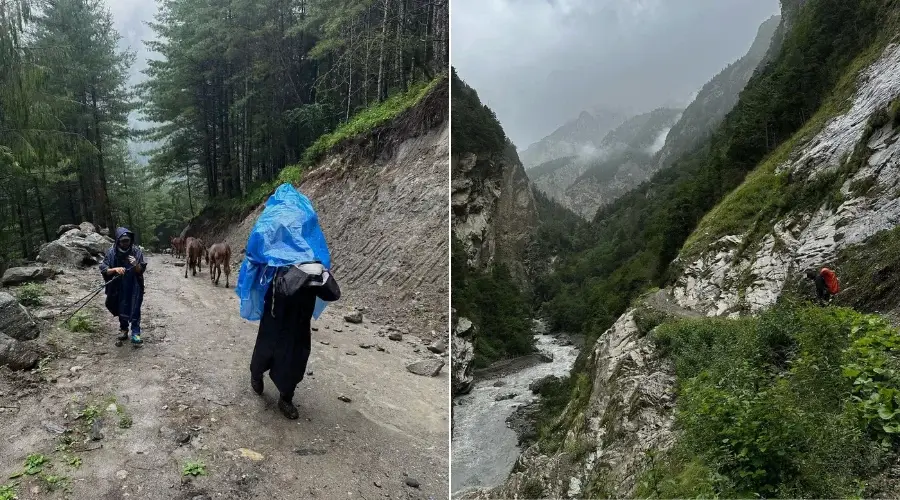
How are the Weather and Temperature of This Trek in Monsoon?
Nar Phu Valley is somewhat warm during monsoon season. The daytime temperature around Nar and Phu Villages can reach around 20°C, but the environment could feel warmer due to humidity. Meanwhile, at night, the temperature can drop to 0°C.
Frequent rainfall is common, so trekking during these times could be tricky. Due to rain, the nights could be even colder. So, proper insulation and rain cover is required.
Although challenging, monsoon trekking provides solitude and vibrant greenery to the trekkers.
Can I trek Nar Phu Valley Trek During Winter?
Trekking in Nar Phu Valley during winter is challenging. The region during this time is freezing cold, with heavy snowfall. Due to snowfall, even crossing Kang La might not be possible. However, the lower valley is still accessible.
Winter trekking is comparatively the least popular time to trek Nar Phu Valley. Moreover, this season provides solitude and additional adventure. These conditions are possible only for experienced trekkers, only with good Nar Phu Valley Trek preparation.
Remember to carry winter gear, a good quality down jacket, and thermal layers. Packing -20°C rated sleeping bag is recommended. Also, be prepared to walk a little quicker, as there is shorter daylight.
How is the Weather and Temperature of the Trek in Winter?
The daytime temperature of Nar Phu Valley ranges around 5°C to 10°C. At high altitudes, it might be even colder, around -5°C. But the day air and strong winds make it feel even colder.
Likewise, the night in Nar Phu Valley trek is even more unforgiving. The temperature could drop around -15°C to -20°C. Due to this, crossing Kang La Pass is close to impossible, and most of the time, access to the pass is prohibited.
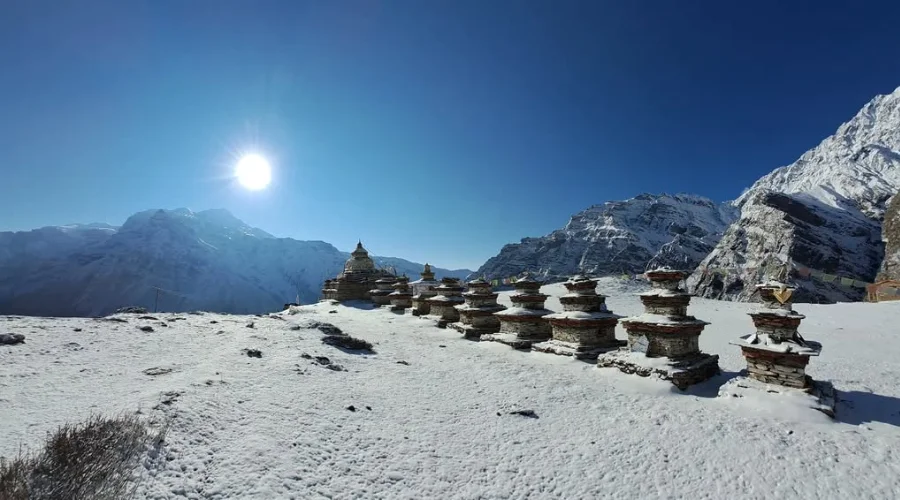
Nar Phu Valley Trek Season Breakdown
Here’s a quick review of Nar Phu Valley Trek best season and what to expect during different seasons.
| Season | Weather | Temperature (Day/Night) | Teahouse Availability | Best For Trekking? |
| Spring (Mar-May) | Clear skies, blooming flowers | 10°C to 15°C / -5°C to -10°C | Open and busy | Yes |
| Autumn (Sep–Nov) | Stable, best visibility | 10°C to 15°C / -5°C to -12°C | Open and crowded | Yes |
| Monsoon (Jun–Aug) | Rainy, slippery, and humid in lower areas | 15°C to 20°C / 0°C to 5°C | Open, but fewer trekkers | Not Recommended |
| Winter (Dec–Feb) | Snowy, freezing cold | 5°C to 10°C / -15°C to -20°C | Limited at high altitudes | Not Recommended |
Contact Himalayan Masters Today for Expert Guidance
Let Himalayan Masters help you plan your Nar Phu Valley trek. We are here to assist you with every preparation, from beginning to end. For any information, arrange all your trek permits, transportation, accommodation, and itinerary.
Whichever season you choose, we will provide you with the most experienced and licensed guide and porter for a successful, safe, and memorable journey.
You can contact Himalayan Masters at our email at [email protected], or you can text us at our WhatsApp number +977-9823636377.
Want to know more?
Speak to an Expert





Sandip Dhungana
Nepal 🇳🇵
Whatsapp: +977-9823636377

